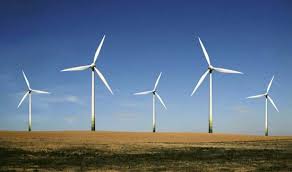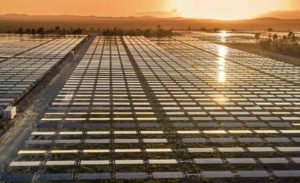If the Australian renewables industry was looking for affirmation from Australia’s two mainstream parties at the industry’s major annual conference this week, then it might have been disappointed. Instead, it appears destined for yet more uncertainty and a less ambitious conclusion.
An industry that is craving some level of “policy certainty” may have to wait another year or 18 months, depending on the result of the upcoming election, and there is growing concern that the ability of Australia to meet its minimum 20 per cent renewable energy target is becoming increasingly difficult. So much so that some in the industry appear ready to accept a delay in the target’s deadline.
Over the next seven years, more than $20 billion is expected to be spent on new wind farms, solar farms and other large-scale renewable energy projects – not counting the billions of dollars that are expected to be invested by households in rooftop solar.
All this was to be built to meet the fixed renewable energy target of 41,000GWh, which is supposedly a bi-partisan goal. Right now, however, while households continue to invest heavily in rooftop solar because it saves them money from their electricity bills, a lot of the large-scale investment is at a standstill.
This is due to the uncertainty created by the upcoming election, the insistence of the Coalition in having yet another review of the renewable energy target in 2014, and the failure of Labor to legislate for that review to be held in 2016 – as was recommended by the Climate Change Authority’s review of the RET, which was completed just seven months ago.
Further adding to the problems for renewables is the decision to move more quickly to an emissions trading scheme, which will result in a higher price for renewable energy certificates, and a complication of the politics around renewables, if the carbon price stays low.
There now appears to be a growing, albeit begrudging acceptance that the RET may be diluted – as major retailers such as Origin Energy and Energy Australia want – or possibly extended to give more time to build the large-scale projects needed. Such a compromise would have been unthinkable a few years ago, but may be inevitable given the spoiling tactics of many of the major incumbents. It stands in sharp contrast to states and countries overseas, particularly California, which recently lifted its renewables target of 33 per cent and may soon go to 50 per cent.
The industry would have liked to have heard from the key decision makers in the mainstream parties, but because of an unfortunate series of events, neither climate change spokesman Greg Hunt nor energy spokesman Ian Macfarlane, who famously told the industry last year that he didn’t think much of their solar and wind farms, were on hand from the Coalition.
And neither climate change minister Mark Butler nor Energy Minister Gary Gray were present from the government. Butler was supposed to attend but his dual role as environment minister meant he had to fly to Tasmania to talk to some miners about some trees (the Tarkine court case).
That left a pair of duelling parliamentary secretaries. Labor’s Yvette D’Ath, told the conference that a re-elected Labor Party would legislate for a four-year period between reviews, but it was not immediately clear if this would make the 2014 review redundant or not. The Coalition’s Simon Birmingham, while promising there was “no hidden agenda”, insisted the coalition “wanted to ensure” that the scheme was operating effectively, even though the CCA had just completed its review in December last year.
Given the expected delay, the wind industry, in particular, is clearly fretting about its ability to erect that many turbines in a short space of time – although it may find that the solar PV industry accounts for a lot of it in future years, given the growing ability of solar PV to compete on costs and to build projects rapidly. And given the fall in solar costs, it would seem bizarre that anyone in the renewable energy industry should contemplate supporting a move to, say, modify the target to Origin Energy’s preference of a 25/25 target, or extend the 41,000GWh fixed target to 2022 or 2025 as some sort of compromise deal.
But that appears to be what some are suggesting, at least in private.
Even Michael Fraser, the CEO of AGL Energy – one of the big three retailers – and chairman of the Clean Energy Council, told the conference that while remarkable progress had been made in household solar – changing the way the industry as a whole is operating in Australia – there were major questions about large-scale developments.
He said it would be a challenge to meet the 41,000GWh target because of the uncertainty created by having another RET review in 2014.
“You cannot ask industry to invest billions of dollars …. if the goal posts will be moved every two years,” he said. “We have to settle the target once and for all in 2014. And then (the politicians should) step back and the let the industry invest with confidence.”
AGL has been the only one of the big three retailers to support the 41,000GWh target by 2020. But later, when interviewed by RenewEconomy, Fraser cited the uncertainty as a major impediment to large-scale developments. AGL, for instance, had postponed approval on the massive Silverton wind farm in NSW.
“We are going to run for at least another 12 months, potentially 18 months, before the next review is completed,” Fraser told RenewEconomy. “That will make it a real challenge to meet that target. No one wants a policy or a target that is unachievable. We need to see what comes out of the review. Everyone would agree that the target has to be realistic.”
David Green, the CEO of the Clean Energy Council, said earlier that the two-year review was a recipe for instability for the market. One wonders if the industry regrets not pushing Labor to take on the Opposition and put the four-year review to a parliamentary test, given the uncertainty that is now created, and the growing possibility that a target will be diluted or deferred.
But Green, and Fraser, noted how the energy industry is changing – mostly as a result of the rooftop solar and the growth of “distributed generation”.
“The structure of the energy industry is changing,” Green said. It was moving from large-scale investment in pipes and poles to more active engagement with consumers, and more smaller-scale investments, embedded in the system. “We are beginning to shift the way we use electricity and the other fuels in the industry,” he said.








